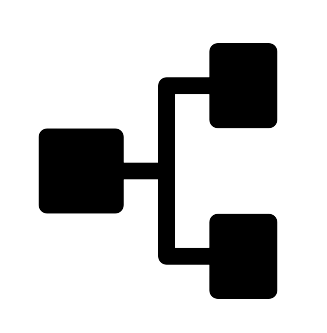Atom Concept Map
Atoms are the fundamental units of chemical elements, consisting of a nucleus made up of protons and neutrons, surrounded by electrons that orbit in various energy levels. The atomic number, defined by the number of protons in the nucleus, determines the identity of the element and influences its chemical properties and interactions. Understanding atomic components and their interactions is vital for comprehending the structure of matter and the fundamental forces of nature.

Summary
The atom is the fundamental unit of a chemical element, consisting of a nucleus surrounded by electrons. The nucleus contains protons, which have a positive charge, and neutrons, which are neutral. The number of protons defines the atomic number, which determines the element's identity and its position on the periodic table. Atoms bond to form molecules, which are essential for the composition of matter.
Protons are subatomic particles located in the nucleus and are crucial for defining the atomic number. They are composed of three quarks held together by the strong nuclear force, mediated by gluons. Protons play a significant role in the chemical properties of elements and are involved in nuclear reactions.
Gluons are massless particles that act as the exchange particles for the strong nuclear force, binding quarks together within protons and neutrons. They carry a "color charge" and can interact with each other, which is a unique feature of the strong force. This self-interaction leads to the confinement of quarks and gluons within larger particles, preventing their isolation.
Quarks are fundamental particles that combine to form protons and neutrons. They come in six flavors and possess fractional electric charges. Quarks are never found alone due to confinement and are always grouped with other quarks. Their study is vital for understanding the structure of matter and the fundamental forces at play in the universe.
The atomic number is a key property that influences an element's chemical behavior and is used to organize the periodic table. It determines the electron configuration of an atom, which affects how atoms bond and react chemically. Understanding these concepts is essential in fields such as chemistry, physics, and materials science.
Neutrons, discovered by James Chadwick, are neutral particles that play a critical role in the stability of atomic nuclei and in nuclear reactions. They do not interact with electric fields and are detected through their interactions with other particles. Various detection methods, such as scintillation detectors and neutron activation analysis, are employed to study neutrons in experimental physics.
Key Takeaways
- Atoms consist of a nucleus surrounded by electrons.
- The nucleus contains protons (positively charged) and neutrons (neutral).
- Electrons are negatively charged and orbit the nucleus in energy levels or shells.
- The atomic number, determined by the number of protons, defines the element.
- Atoms can bond to form molecules, which are the building blocks of matter.
- Understanding atoms is essential in chemistry, physics, and materials science.
- Protons are subatomic particles in the nucleus that determine the atomic number.
- Protons are composed of three quarks held together by the strong nuclear force.
- The mass of a proton is approximately 1 atomic mass unit (amu).
- Gluons are elementary particles that mediate the strong nuclear force.
- Gluons carry a "color charge" and can interact with each other.
- Quarks are fundamental particles that make up protons and neutrons.
- Quarks come in six flavors: up, down, charm, strange, top, and bottom.
- Quarks have fractional electric charges and exhibit color charge.
- Quarks cannot be isolated due to confinement; they are always found in combinations.
- The atomic number is crucial for identifying elements and determining their chemical properties.
- The atomic number influences electron configuration and chemical reactivity.
- The Manhattan Project was a WWII initiative to develop nuclear weapons.
- The project led to the first successful atomic bomb detonation in 1945.
- Neutrons play a significant role in nuclear reactions and the stability of atomic nuclei.
- Neutrons are detected through their interactions with atomic nuclei using various methods.
